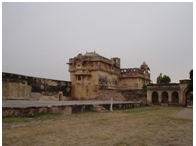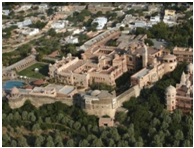Nagaur Fort was one of the first Muslim strongholds in northern India and one of the finest examples of Rajput- Mughal architecture, Built in the early 12th century and repeatedly altered over subsequent centuries, it witnessed many battles. Underwent major renovations in 2007, 90 fountains are now running in the gardens and buildings. The fort’s buildings and spaces, both external and internal, serve as venue, stage and home to a Sufi Music Festival



